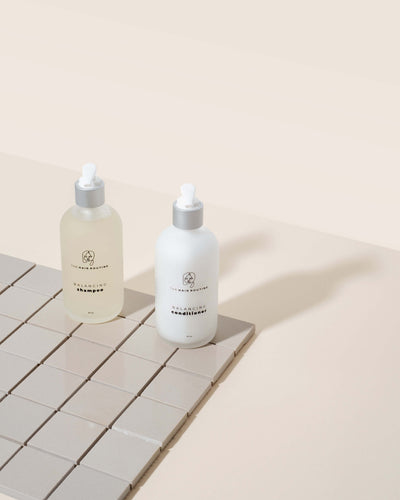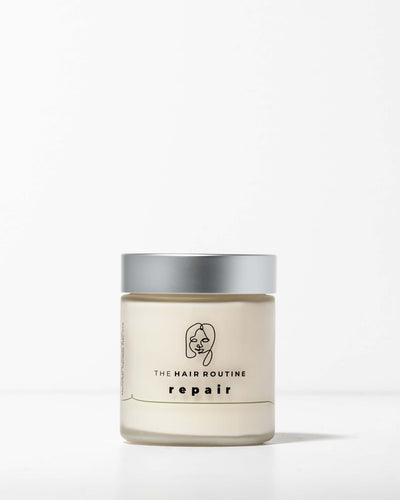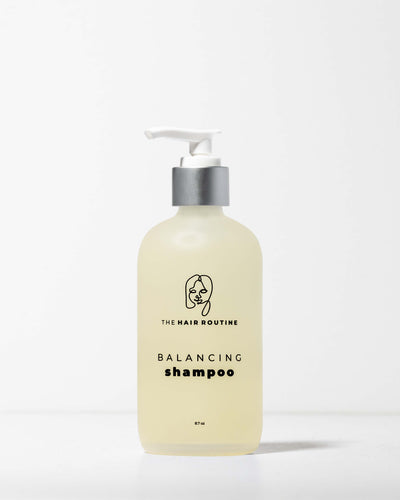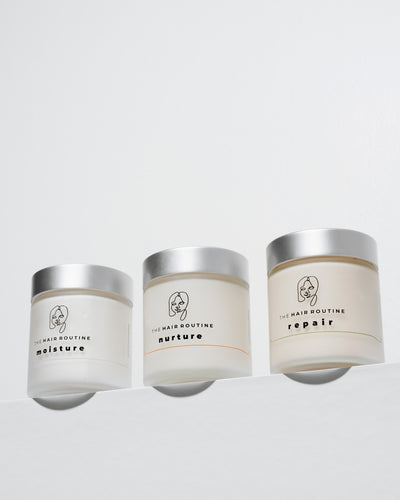How to care for braided, 4C hair
in Collaboration with Christina Charles
What you’ll learn:
- Special care before styling
- The importance of strong hair strands
- Prep, Repair and Moisturize
- 6 Simple Rules for Box Braids
In an effort to become more inclusive to all hair types, we’ve collaborated with Christina Charles, a close friend and full time nurse who explained and detailed the steps she follows before and during box braiding her hair. She has 4C hair type and loves taking care of it to keep it healthy.

Christina Charles (Quebec, Canada)
Christina's Hair Care Routine for a Protective Style
Before adopting any type of protective hairstyle on 4C hair type, it’s very important that the hair is as healthy as it can be.
Protective Hairstyle
The main goal of a protective hairstyle is to give the hair some rest from regular stress so that it can grow healthier.
Taking care of hair types 4a, b, and c requires a lot of manipulation because of the hair’s main characteristics. For example, due to the natural dryness of curly hair types, extra effort is needed to keep the strands moisturized and nourished. The curls need to be detangled and separated every single day. All this handling puts a lot of stress on the curls and causes breakage, split ends, and hair loss. r
Putting the hair in a protective style reduces all this manipulation and gives it a break. A protective hairstyle is one that will prevent damage and promote constant nourishment. The most popular protective hairstyles are: wigs, braids, and cornrows.
Box braids are an easy and low maintenance protective hairstyle. There’s only a few rules to follow so that you can keep your hair healthy and nourished throughout the process. Follow these simple rules to make the best out of your protective hairstyle:
- Make sure the protective hairstyle is not too tight.
- Avoid keeping the braids for more than a month.
- Take a few weeks break in between your braidings.
- Put oil on your scalp to keep it nourished. You can use a blend made with avocado, castor, almond, olive, and aloe vera oil. You can also apply a bit of the Nurture Treatment which contains sunflower seed, avocado, argan, evening primrose, grapeseed, and olive oils as well as shea butter, ginseng, and rosehip extracts. It also contains a combination of grapefruit, ylang-ylang, and bergamot essential oils to foster hair growth.
- Gently wash your hair every 1 to 2 weeks to keep the braids clean.
Pre-braiding
Dry, unhealthy, and undernourished hair will easily break and will struggle to grow. So, for any plan you have for your hair whether it be to straighten, dye, curl, or place it in a protective style, it's important to start with healthy hair that is nourished and hydrated from the roots to the ends, this means replenishing the strands with extra water and oils.
Prepare
First, prepare your hair to receive treatment by giving it a proper wash. By this we mean a deep cleansing wash, making sure you remove all the dirt and residue from previous treatments and oils. This can be done using shampoos with apple cider, black soap, or green tea which are good cleaning agents. Or, you can look for a strong, clarifying shampoo. Wash your hair with it twice only, mainly focusing on cleaning the scalp.
Repair
Doing a protein treatment is the best way to repair and strengthen your hair before a stressful event for the strands. You can try homemade masks with avocado, mayonnaise, eggs etc. or look for hair treatments that contain hydrolyzed proteins that help regenerate the bonds that strengthen the strands. The Repair Treatment restores hair mass with a unique formulation that includes regenerative ingredients such as keratin, oats, corn, wheat, soy proteins, and oat amino acids.
EVERYTHING YOU NEED TO KNOW ABOUT THE REPAIR TREATMENT
Moisturize
The balance between water and protein is essential to avoid stiffness sometimes caused by the protein. Water inside the strands gives the strands elasticity, reducing breakage and promoting healthier growth.
Look for a moisturizing treatment that contains hydrating ingredients such as aloe vera, fenugreek, and Pro-vitamin B5. Make sure it doesn't contain any drying ingredients like alcohol or sulfates. This Moisture Treatment is formulated with moisture-locking ingredients such as glacial water, sucrose, pro-vitamin B5, meadowfoam seed, sweet almond, grapeseed, olive, and coconut oils that moisturize the hair and stimulate the scalp while replenishing the hair fibers with water.
Don’t forget to follow a hair routine that constantly replenishes your strands with water, oil, and protein. You can complete this hair test to find out what the best hair care routine for your hair type and situation is.






